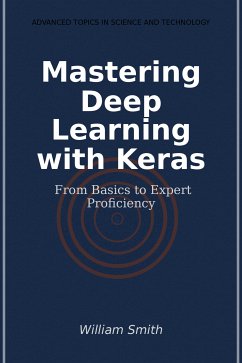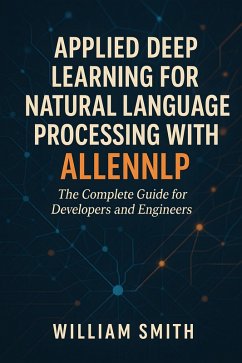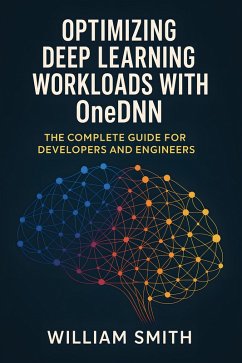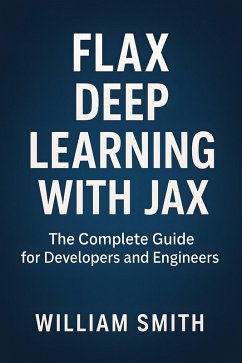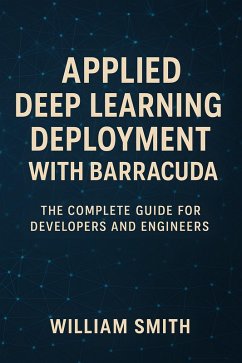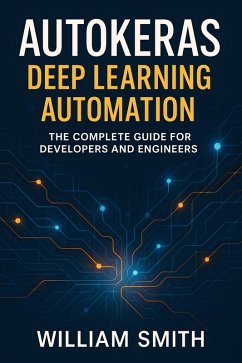
Optimized Deep Learning on Apple Silicon with PyTorch MPS (eBook, ePUB)
The Complete Guide for Developers and Engineers
Sofort per Download lieferbar
8,52 €
inkl. MwSt.

PAYBACK Punkte
0 °P sammeln!
"Optimized Deep Learning on Apple Silicon with PyTorch MPS" "Optimized Deep Learning on Apple Silicon with PyTorch MPS" is the definitive guide for practitioners and researchers seeking to harness the full power of Apple's cutting-edge hardware for machine learning. This comprehensive book begins with an in-depth exploration of Apple Silicon's architecture, uncovering how its unified memory design, high-performance Neural Engine, and Metal-based GPU enable efficient, high-throughput AI workloads. Thoughtful comparisons with x86, CUDA, and other AI platforms equip readers with a nuanced underst...
"Optimized Deep Learning on Apple Silicon with PyTorch MPS"
"Optimized Deep Learning on Apple Silicon with PyTorch MPS" is the definitive guide for practitioners and researchers seeking to harness the full power of Apple's cutting-edge hardware for machine learning. This comprehensive book begins with an in-depth exploration of Apple Silicon's architecture, uncovering how its unified memory design, high-performance Neural Engine, and Metal-based GPU enable efficient, high-throughput AI workloads. Thoughtful comparisons with x86, CUDA, and other AI platforms equip readers with a nuanced understanding of where Apple Silicon excels and where challenges remain, particularly for edge and embedded deployments.
The text provides an advanced and practical introduction to using PyTorch's Metal Performance Shaders (MPS) backend, covering intricate details of device abstraction, operator support, memory management, and data pipelines. Readers will discover best practices for model adaptation, quantization, pruning, and mixed-precision training specifically tailored for Apple's unique hardware landscape. Step-by-step optimization techniques-ranging from efficient batch loading and asynchronous execution to advanced profiling and performance tuning-empower users to maximize model accuracy and throughput while minimizing latency and resource usage.
Going beyond core concepts, the book features real-world case studies and hands-on guidance for deploying deep learning models at scale, both on Apple devices and within hybrid, cross-platform architectures. From distributed training and Kubernetes orchestration to on-device inference, monitoring, and enterprise pipeline integration, each chapter anticipates the next generation of challenges and opportunities in AI. Alongside a forward-looking review of forthcoming Apple hardware and MPS developments, this book serves as an essential blueprint for professionals and teams intent on building robust, efficient, and future-proof AI solutions within the expanding Apple ecosystem.
"Optimized Deep Learning on Apple Silicon with PyTorch MPS" is the definitive guide for practitioners and researchers seeking to harness the full power of Apple's cutting-edge hardware for machine learning. This comprehensive book begins with an in-depth exploration of Apple Silicon's architecture, uncovering how its unified memory design, high-performance Neural Engine, and Metal-based GPU enable efficient, high-throughput AI workloads. Thoughtful comparisons with x86, CUDA, and other AI platforms equip readers with a nuanced understanding of where Apple Silicon excels and where challenges remain, particularly for edge and embedded deployments.
The text provides an advanced and practical introduction to using PyTorch's Metal Performance Shaders (MPS) backend, covering intricate details of device abstraction, operator support, memory management, and data pipelines. Readers will discover best practices for model adaptation, quantization, pruning, and mixed-precision training specifically tailored for Apple's unique hardware landscape. Step-by-step optimization techniques-ranging from efficient batch loading and asynchronous execution to advanced profiling and performance tuning-empower users to maximize model accuracy and throughput while minimizing latency and resource usage.
Going beyond core concepts, the book features real-world case studies and hands-on guidance for deploying deep learning models at scale, both on Apple devices and within hybrid, cross-platform architectures. From distributed training and Kubernetes orchestration to on-device inference, monitoring, and enterprise pipeline integration, each chapter anticipates the next generation of challenges and opportunities in AI. Alongside a forward-looking review of forthcoming Apple hardware and MPS developments, this book serves as an essential blueprint for professionals and teams intent on building robust, efficient, and future-proof AI solutions within the expanding Apple ecosystem.
Dieser Download kann aus rechtlichen Gründen nur mit Rechnungsadresse in A, B, BG, CY, CZ, D, DK, EW, E, FIN, F, GR, H, IRL, I, LT, L, LR, M, NL, PL, P, R, S, SLO, SK ausgeliefert werden.





